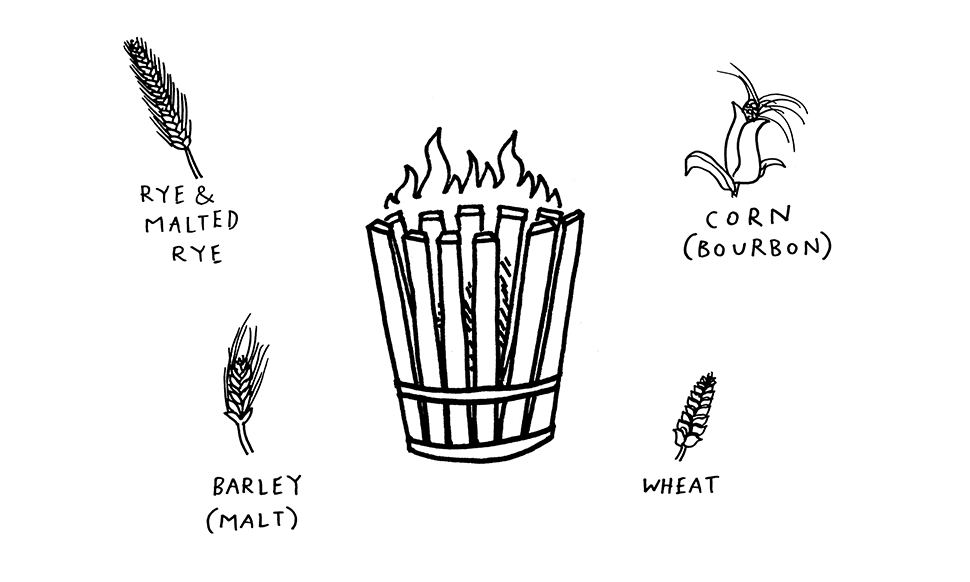

posted by John Curtin,
Co-owner
Why Use Barrels?
As mentioned previously, barrels aren’t a great way to store liquid. However, when you’re making whiskey, it’s not just standard practice; it’s required by law.*
In the United States, there are five major “types” of domestic whiskey: bourbon, rye, malt, wheat, and malted rye. If you’re making one of those types, the rule is clear: you must use a charred oak container (i.e. a barrel, but this does not preclude other types of oak container, which will be discussed some other time).

One of the most iconic effects that a barrel (and a charred barrel in particular) has on whiskey is that it turns the distillate brown. Distillation is essentially the creation and collection of steam; as a result, distilled spirits are generally crystal clear. Whiskey appears no different than water when it runs off the still. Time in oak imparts that lovely brown color that people associate with aged spirits.**

Distillate that hasn't seen the inside of a barrel; just clear collected steam. (Photo: Jennifer Bakos)
Charred wood also has a filtering effect. This is because when whiskey gets warm, it expands much more dramatically than wood does; when that happens, it gets pushed further into the staves. When it cools, some of it goes back into the barrel, having passed through that layer of charcoal.
When wood burns, the areas around the actual burning get toasted. Toasting wood creates a slew of chemical changes and compounds, most of which are pretty tasty (vanillin, for example). These compounds are extracted slowly over time, like steeping tea leaves in hot water.

Close-up of a charred oak barrel staff.
Perhaps most importantly—and also why leaking is okay—time in barrels serves to oxidize the whiskey. Oxidation occurs as a result of the various ways that whiskey leaves the barrel (as previously discussed). When whiskey leaves, air is pulled in to replace it. Here on Earth, about a fifth of that air is good ol’ oxygen. Oxygen is a real busybody, causing all sorts of changes to happen. These occur extremely slowly, which is why older whiskey tastes so much different than younger whiskey.
It's interesting to note that for the first thousand years or so, barrel aging wasn’t necessarily standard practice. It really didn’t start until the latter part of the 19th century, but we’ll talk about that another time. Suffice it to say that while it’s not necessarily a traditional practice, aging whiskey caught on quickly, and we’re all glad it did.
* This applies specifically to whiskey produced in the United States. The exception is corn whiskey, which, if made with at least 80% corn, does not require labeling.
** Well, for high-quality spirits it does. Many less scrupulous producers add spirit caramel (E150 in the EU) to their products to alter their appearance. This is considered to be tasteless. The coloring agent, that is. We don’t use it, and in fact would prefer to see it banned as an unnecessary addition.

- © 2024 Albany Distilling Company, Inc.
- All Rights Reserved.
